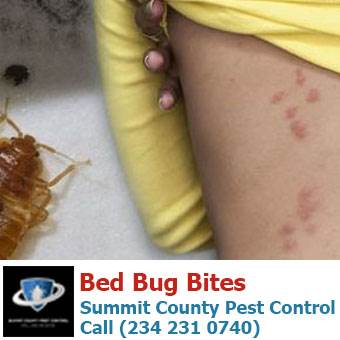A1 Bed Bug Exterminator Houston: Quick Removal Solutions
A1 Bed Bug Exterminator Houston: Quick Removal Solutions
Blog Article
Comprehending the Lifecycle of Parasites for Targeted Control Approaches
Understanding the lifecycle of parasites is an essential aspect of efficient insect management strategies. Through a much deeper understanding of exactly how parasites advance and grow, customized control approaches can be created to attend to particular points in their lifecycle, ultimately leading to more effective parasite monitoring outcomes.
Value of Comprehending Insect Lifecycle
Recognizing the lifecycle of insects is necessary for creating reliable and targeted control strategies in parasite monitoring. By understanding the numerous phases a parasite goes via from egg to adult, pest control specialists can identify susceptible factors in the lifecycle where treatment can be most effective.
In addition, recognizing the particular environmental problems needed for each and every stage of the pest's lifecycle can direct choices on habitat alteration or exemption methods to interrupt the lifecycle and minimize parasite populations. This expertise makes it possible for pest administration professionals to carry out positive procedures instead of relying solely on reactive treatments, bring about more sustainable and long-lasting parasite control options. Inevitably, a comprehensive understanding of insect lifecycles empowers pest control specialists to tailor their approaches efficiently, reducing ecological effects and optimizing control results.
Key Stages in Insect Advancement
To successfully apply targeted control strategies in bug management, a crucial aspect hinges on thoroughly identifying and comprehending the key stages in bug development. Pest advancement generally contains a number of crucial stages that are important for their lifecycle and administration. The initial phase is the egg phase, where insects lay eggs that later hatch into larvae. Larvae then proceed right into pupae, a stage where they undergo transformation prior to emerging as adult bugs. Recognizing these phases is necessary as it aids in determining susceptible factors in the lifecycle where control steps can be most reliable.

Vulnerabilities in Pest Lifecycle
Throughout the different phases of an insect's lifecycle, unique susceptabilities emerge that can be tactically targeted for reliable control steps. One vital vulnerability depends on the egg phase, where insects are typically extra vulnerable to specific pesticides or organic control representatives as a result of their soft outer shell, making them easier targets for treatment. Additionally, the nymph or larval stage offers vulnerabilities as insects undergo fast growth and development, calling for high energy intake that can be made use of by disrupting their food sources or presenting growth inhibitors. Pupal phases, identified by stability and improvement, offer a home window for targeted control via physical obstacles or specific therapies that impede effective development. Ultimately, grown-up parasites, while extra resilient due to their reproductive capacity, can visit here still be vulnerable during mating or egg-laying activities, which can be disrupted with pheromone traps or sterilization methods. Comprehending these susceptabilities in the pest lifecycle is important for creating reliable and specific control methods that successfully take care of parasite populaces while decreasing environmental influence.
Applying Targeted Control Measures

Carrying out targeted control measures usually entails a multi-faceted method. This might include habitat adjustment to make the environment much less congenial to parasites, such as removing standing water for mosquito control or securing access factors for rats. In addition, biological control techniques can be used, where all-natural killers or virus are presented to keep insect populations in check.
Chemical control, such as the careful application of chemicals, is an additional usual technique. It is important to use these compounds deliberately to reduce environmental influence and prospective harm to non-target varieties - A1 Bed bug exterminator houston LLC. Integrated Pest Management (IPM) methods that incorporate different control actions in a worked with and sustainable manner are frequently the most effective in achieving long-term insect monitoring objectives. By executing targeted control actions based on an extensive understanding of insect lifecycles, bug populaces can be properly controlled while lessening dangers to human health and wellness and the setting.
Improved Insect Administration Practices

Furthermore, the incorporation of biological control agents, such as natural killers or virus of bugs, can help in reducing dependence on chemical pesticides and advertise an extra balanced environment. Executing physical obstacles and traps can also become Continue part of boosted parasite monitoring techniques, offering safe and targeted remedies for bug control. Additionally, using scents and various other semiochemicals can disrupt pest mating patterns and communication, bring about minimized bug populations with time.
Final Thought
In verdict, understanding the lifecycle of insects is critical for reliable pest monitoring strategies. By determining vital stages in bug growth and vulnerabilities in their lifecycle, targeted control measures can be carried out to minimize pest populaces. Improved bug monitoring techniques advice can help in reducing the dependence on broad-spectrum pesticides and advertise even more ecologically pleasant and lasting pest control techniques. This understanding plays an essential role in keeping healthy and balanced communities and agricultural efficiency.
Comprehending the lifecycle of pests is important for establishing effective and targeted control techniques in bug monitoring. By comprehending the different phases a parasite goes with from egg to adult, parasite control experts can recognize susceptible factors in the lifecycle where treatment can be most effective. Ultimately, a complete understanding of parasite lifecycles empowers bug control professionals to customize their methods properly, optimizing and lessening environmental influences control results.
By applying targeted control procedures based on a complete understanding of parasite lifecycles, pest populaces can be efficiently regulated while reducing dangers to human health and wellness and the environment.
By determining crucial phases in insect growth and vulnerabilities in their lifecycle, targeted control procedures can be carried out to decrease pest populations.
Report this page